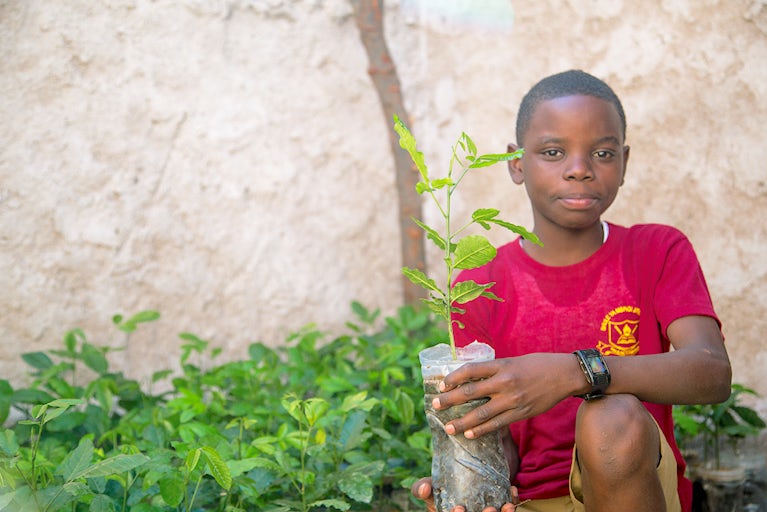If you need to know what to do to nurture a tree from seed to sapling, you’d do well to talk to 12-year-old Frederick Joseph on the subject. He’ll tell you what you need to know.
Frederick is a student at Jitegemee Primary School in Igunga, Tanzania, a town plagued by drought and vulnerable to climate change. Thanks to his school’s partnership with Heifer, he and his fellow students are learning something new: how to care for the environment. Thanks to these new classes, Frederick has become an expert in planting and nurturing trees in Igunga’s parched soil. I sat down with him for a tutoring session to learn his secrets and, with his permission, will now pass them on to you.
Here’s what you’ll need:
- Tree seeds of your choice (Frederick suggests acacia and moringa for especially dry, hot climates like Igunga)
- A Bucket
- Water
- Fertilizer
- Soil
- A Shovel
- Mulch
- Used Plastic Water Bottles (or comparably-sized containers)
- Scissors or a razor blade


